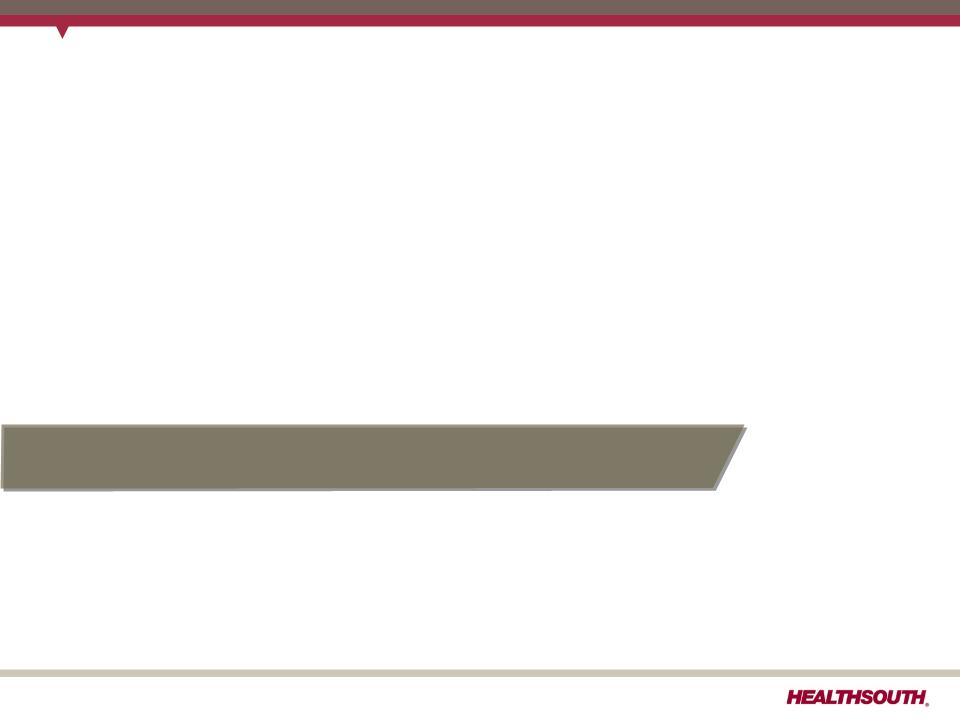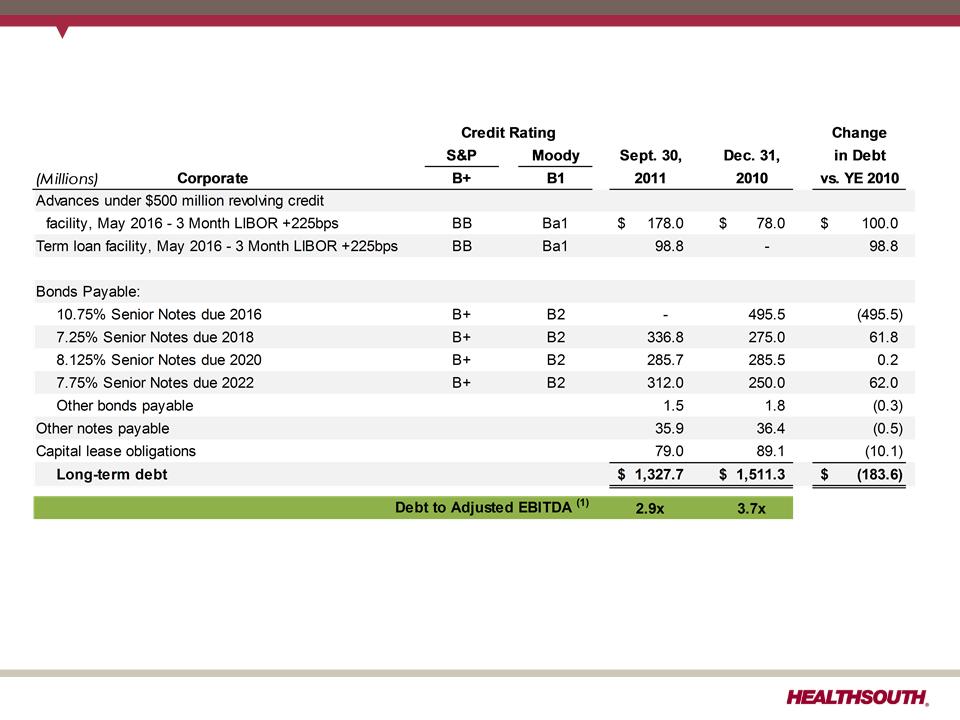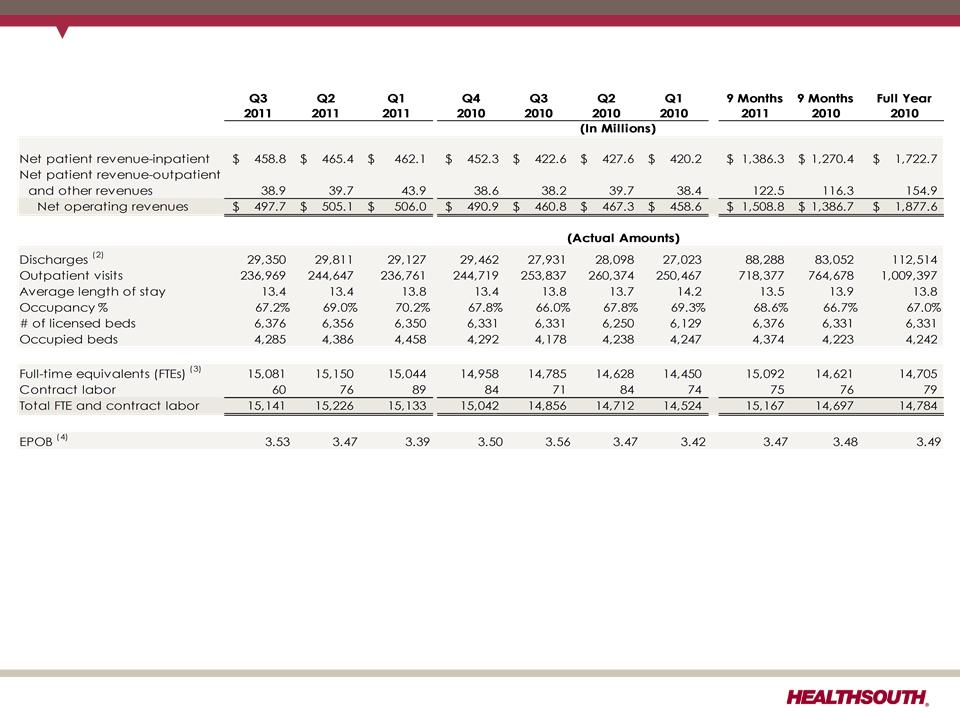- EHC Dashboard
- Financials
- Filings
-
Holdings
- Transcripts
- ETFs
- Insider
- Institutional
- Shorts
-
8-K Filing
Encompass Health (EHC) 8-KResults of Operations and Financial Condition
Filed: 27 Oct 11, 12:00am




Location | # of Beds | Transaction | Date |
Bristol, VA | 25 | De Novo | Q3 2010 |
Houston, TX | 50 | Acquired new IRF | Q3 2010 |













ü The Adjusted EBITDA ($17.5 million in 2010) associated with the Company’s six LTCHs has been reclassified to discontinued operations. |





GAAP Considerations: •As of 9/30/11, the Company had an ending balance of approx. $1.3 billion in federal NOLs and a remaining valuation allowance of approx. $105 million, primarily related to state NOLs. •Expect effective tax rate of approx. 40% going forward Future Cash Tax Payments: •The Company expects to pay approx. $5 million to $8 million per year of income tax. •The Company does not expect to pay significant federal income taxes for up to 7 years. •HealthSouth is not currently subject to an annual use limitation (“AUL”) under Internal Revenue Code Section 382 (“Section 382”). A “change of ownership,” as defined by Section 382, would subject us to an AUL, which is equal to the market capitalization of the Company at the time of the “change of ownership” multiplied by the long-term tax exempt rate. |















